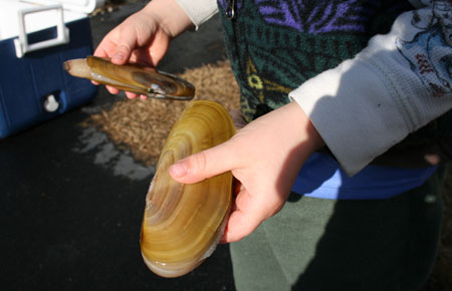Scallopers fleet looks to add effort
Cook Inlet clammers dug on a quota of more than 350,000 pounds as the season got underway in May. The diggers arrive at Polly Creek in spring, put up semi-permanent camps and hit the low tides each morning in search of razor clams, which are lugged back up the beach, where the sands are solid enough to land small airplanes. The planes ferry them from the west side of the inlet to a processing plant at Nikiski, which is north of Kenai on the Kenai Peninsula.
Clam meat recovery runs 40 to 50 percent. In 2016, the clammers dug 284,800 pounds of razors, and the harvest fell to 177,147 pounds in the 2017 season. Preliminary harvest data for 2018 suggests the harvest will wind up around 175,940 pounds, down sharply from the 380,912 pounds that diggers dug just five years ago.
The decline in production could be tied to a couple of factors, according to Pat Shields, a regional management biologist with the Alaska Department of Fish and Game in Soldotna.
“There are fewer diggers working for the company now,” said Shields. “They used to average around 20 to 22 diggers per year, and now they’re down to something like 14 to 15.”
Most of the product winds up in retail markets along the West Coast. Diggers are paid 90 cents a pound for food-grade clams and 60 cents for those with broken shells, which are used for bait.
According to Shields, 2018 revenues tallied up to $175,624 for food-grade clams and $2,344 for bait.
Meanwhile, Alaska’s fleet of just two scallop dredgers worked on a statewide guideline harvest level of 265,000 pounds (shucked meat) The majority of the 145,000-pound GHL for the 2018-19 season has been set for harvest areas near Yakutat, with another 85,000 pounds available for harvest areas surrounding Kodiak. The Cook Inlet harvest area has been closed in an effort to conserve dwindling biomass.
Scallop trawlers require 100 percent observer coverage, and the season began on July 1.
In the 2017-18 season, dredgers put in 238,710 pounds of shucked meat at ex-vessel prices of nearly $12.53 per pound. A cost analysis presented to the North Pacific Fishery Management Council suggested that the fleet might have to be adjusted to three boats to make it a profitable venture among the vessel owners.







